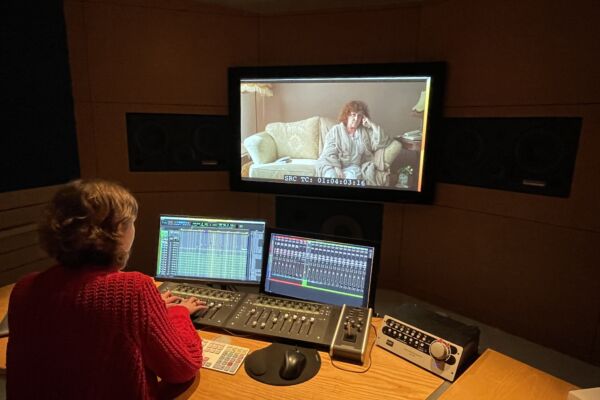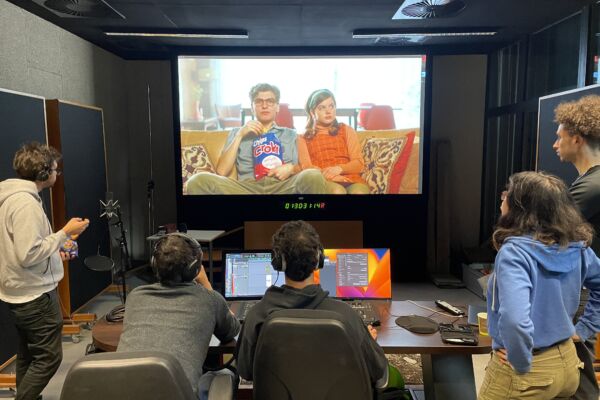
Sound Design
Do you have an ear for sound? What if you could use it to tell cinematic stories? Sounds evoke emotions and add depth. They are invisible yet indispensable. In this course, you will discover how to use them to create impactful films. Art, technique, and technology merge, enabling you to craft meaningful soundtracks.
Sound: The Secret Ingredient
As a sound designer, you create unique soundtracks that perfectly complement an artistic work. You’ll take charge of everything—from recording and editing to mixing— especially for films, but also for other projects like installations and performances. With a creative approach, you’ll shape every audible element, both on and off the screen. Your work adds emotional and symbolic layers that profoundly affect the audience, often on a subconscious level. Without your input, immersive experiences would simply not be possible.
Collaboration
As a sound designer, you are a vital part of a team, working closely with others. Throughout the program, you’ll participate in exercises and workshops alongside students in Directing, Writing, Production, Cinematography, and Editing. Opportunities to collaborate with students from Radio and Animation Film programs also arise. The shared goal? Creating captivating experiences where image and sound amplify one another.
Your Unique Sound
Creating a soundtrack involves more than technical expertise—it’s an artistic process. During the program, you’ll develop your personal vision and style, ensuring your creations carry a unique and recognizable signature. By experimenting, reflecting, and working on diverse projects, you’ll discover what sets you apart as a sound designer and how to bring your unique sound to life.
All classes are in Dutch.




Your programme
If you want detailed info on the subjects (assessment, examination formats...), please visit our study guide where you can find all ECTS sheets of our programmes.
Admission Test
To start this programme, you must first pass an artistic admission test. The admission test consists of three parts: a dossier, an intake or selection interview and a workshop week.Read more about the admission tests here.
Quality Education
Various instruments guarantee the strengthening and safeguarding of the educational quality of this programme:
- In 2024 external peers assessed the quality of this programme. Read the full peer review .
- The Board of Governors of EhB decided to validate this programme for the period 2024 to 2030 in the validation sheet.
- The quality file provides an overview of the strengths and growth opportunities of this programme.
The Flemish government's opleiding in cijfers website provides information on the profile of this programme such as who follows this programme, how long students take to obtain their degree, etc.
Read more about quality assurance within EhB.